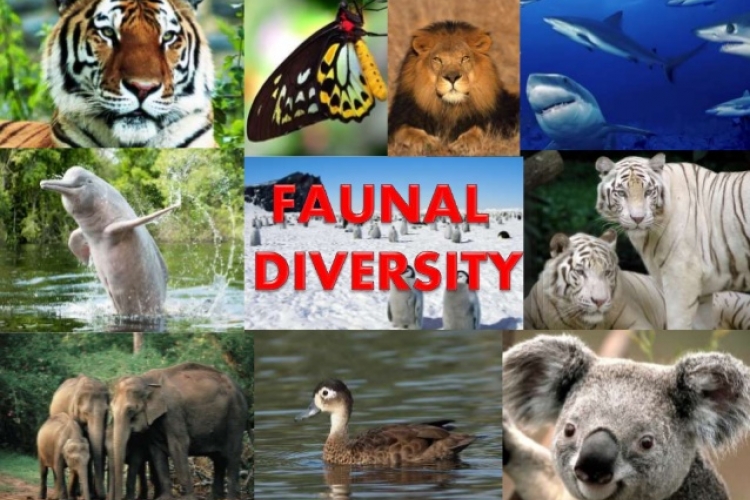FAUNAL DIVERSITY: ZOOLOGICAL SURVEY OF INDIA (ZSI)
IN NEWS
A recent publication by the Zoological Survey of India (ZSI) titled Faunal Diversity of Biogeographic Zones: Islands of India has for the first time come up with a database of all faunal species found on the island, putting the number at 11,009. The documentation proves that the islands, comprising only 0.25% of India’s geographical area, are home to more than 10% of the country’s fauna species.
The publication not only prepares a database of species found in particular category of animals, but also highlights the most vulnerable among them.
HIGHLIGHTS OF THE PUBLICATIONS
- The Narcondam hornbill, its habitat restricted to a lone island; the Nicobar megapode, a bird that builds nests on the ground; the Nicobar tree shrew, a small mole-like mammal; the Long-tailed Nicobar macaque, and the Andaman day gecko, are among the 1,067 endemic faunal species found only on the Andaman and Nicobar Islands and nowhere else.
- Some of the species in A&N Islands are restricted to a very small area and thus more vulnerable to any anthropogenic threat.
- The publication also cautions that tourism, illegal construction and mining are posing a threat to the islands’ biodiversity, which is already vulnerable to volatile climatic factors.
- Relaxing the Restricted Area Permit (RAP) norms for some foreign nationalities notified under the Foreigners (Restricted Areas) Order, 1963, to visit 29 of its inhabited islands, till December 31, 2022 has triggered further concerns of increased anthropogenic pressures over the islands’ ecosystem.
- The publication highlights that the development paradigm such as tourism, construction and development of military, are not taking in account three factors — ecological fragility of the area (the endemism), geological volatility (earthquakes and tsunamis), and the impact they will have on local communities.
CLASSIFICATION OF FAUNA:
- Of the ten species of marine fauna found on the islands, the dugong/sea cow, and the Indo-Pacific humpback dolphin, are both classified as Vulnerable under the IUCN (International Union for Conservation of Nature) Red List of Threatened Species.
- Among the 46 terrestrial mammalian species found, three species have been categorised as Critically Endangered — Andaman shrew (Crocidura andamanensis), Jenkin’s shrew (C. jenkinsi) and Nicobar shrew (C. nicobarica). Five species are listed as Endangered, nine species as Vulnerable, and one species as Near Threatened, according to the IUCN.
- Among birds, endemism is quite high, with 36 among 344 species of birds found only on the islands. Many of these bird species are placed in the IUCN Red List of threatened species under the Wildlife Protection Act (WPA).
- Similarly, eight species of amphibians and 23 species of reptiles are endemic to the islands, and thus are at high risk of being threatened.
- Another unique feature of the islands’ ecosystem is its marine faunal diversity, which includes coral reefs and its associated fauna. In all, 555 species of scleractinian corals (hard or stony corals) are found in the island ecosystem, all which are placed under Schedule I of the WPA. Similarly, all species of gorgonian (sea fans) and calcerous sponge are listed under different schedules of the WPA.
- While highlighting that a long period of isolation from the mainland made the islands hotspots for speciation (the formation of new and distinct species) resulting in hundreds of endemic species and subspecies, the authors of the publication have underlined that any stress can have a long-lasting impact on the islands’ biodiversity, devastating the population size of any endemic fauna, followed by extinction within a limited span of time.


 "UPSC-2026-PRELIMS COMBINED MAINS FOUNDATION PROGRAMME" STARTS WITH ORIENTATION ON FEB-10
"UPSC-2026-PRELIMS COMBINED MAINS FOUNDATION PROGRAMME" STARTS WITH ORIENTATION ON FEB-10